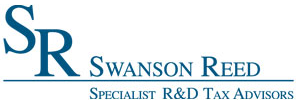MARYLAND INVENTIONINDEX | AUGUST 2025
August 2025: 1.18% (B grade)

Maryland inventionINDEX August 2025: 1.18% (B grade)
The inventionINDEX measures innovation output by comparing GDP growth with patent production growth.
Anything over C grade is positive sentiment; anything under C is negative outlook/sentiment. Using that sentiment, it is possible to observe trends over time, and also compare states/countries. In doing so, we can predict which states have the best chance to recover economically from the pandemic (or any other economic incident that may occur).
Maryland inventionINDEX Scores – Last 12 months
| Month | inventionINDEX Score |
| August 2025 | 1.18% |
| Jul 25 | 1.49% |
| Jun 25 | 1.16% |
| May 25 | 1.20% |
| Apr 25 | 1.42% |
| Mar 25 | 1.04% |
| Feb 25 | 1.25% |
| Jan 25 | 1.24% |
| Dec 24 | 1.31% |
| Nov 24 | 1.17% |
| Oct 24 | 1.39% |
| Sep 24 | 1.22% |
| Aug 24 | 1.18% |
Based on the provided historical table, the Maryland inventionINDEX has demonstrated a consistent, yet fluctuating, performance over the last 60 months. The scores have generally remained within a positive range, most frequently earning ratings of A, A+, and B. However, the data reveals a slight downward trend in the most recent periods, with a score of 1.18% in August 2025 earning a B rating. This contrasts with the 1.49% score and A+ rating just one month prior, and the 1.42% score in April 2025, suggesting a recent period of more variable performance. The historical data also shows that the index has seen exceptional peaks, such as the 1.59% A+ ratings in October 2023 and March 2021, which represent the highest levels of performance in the five-year period.
A consistently high inventionINDEX score, particularly one in the A or A+ range, is indicative of a robust and dynamic innovation ecosystem. A strong score reflects a favorable environment for invention, characterized by the successful development of new ideas and technologies. Positive outcomes of a high score often include increased economic competitiveness, job creation, and attracting investment in technology and research. For instance, the multiple periods of A+ ratings, such as from August 2020 to October 2020 and throughout 2021, likely correlated with significant advancements and growth within the state’s innovation sector. These periods of high scores serve as a benchmark for potential and continued economic vitality.
Conversely, a lower inventionINDEX score suggests potential challenges within the innovation landscape. A score below the average, such as a B, C, or C+, may indicate a slowdown in the pace of innovation or a less fertile environment for new ventures. The table presents a single F rating of 0.58% in May 2023, which represents a significant anomaly and a clear point of concern. Such a low score could signal a period of stagnation, a decline in research output, or a less attractive climate for entrepreneurs. While the scores generally rebound from these dips, a lower rating can lead to negative implications, including a decrease in a region’s competitive standing and a need for strategic adjustments to reignite growth.
In conclusion, the historical performance of the Maryland inventionINDEX highlights a strong, yet volatile, pattern of innovation. The recent B rating for August 2025, following a higher A+ score, underscores the importance of ongoing monitoring to ensure sustained progress. While periods of high achievement have demonstrated the state’s capacity for innovation, the occasional lower scores and fluctuations serve as a reminder that a supportive and evolving innovation strategy is crucial. Maintaining a consistently high index score will be key to solidifying Maryland’s position as a leader in technological advancement and economic development.
Discussion:
In August, the Maryland inventionINDEX scored a positive sentiment which was lower than the previous year’s average and underperformed the upward trend for the year. This is in contrast to the prior 12 months, which experienced a slight downward trend.
As the economy continues to stabilize in the post-pandemic era, it remains uncertain whether any backlog of applications still exists or if the department has returned to normal processing timelines. The inventionINDEX could also be affected by lingering consequences from the pandemic, such as company closures, reduced workforces, and limited R&D capabilities, which may still be impacting current operations.
Learn More:
Are you thinking of patenting any of your bright ideas? Did you know your research work could be eligible for the R&D Tax Credit and you can receive up to 14% back on your expenses? To find out more, please check out our free online eligibility test.
Swanson Reed’s Maryland office provides R&D tax credit consulting and advisory services to Baltimore, Frederick, Rockville, Gaithersburg, Bowie, Hagerstown, Annapolis, College Park, Salisbury and Laurel.
Feel free to book a quick teleconference with one of R&D tax specialists if you would like to learn more about R&D tax credit opportunities.
Who We Are:
Swanson Reed is the largest Specialist R&D tax credit advisory firm in the United States. With offices nationwide, we are one of the only firms globally to exclusively provide R&D tax credit consulting services to our clients. We have been exclusively providing R&D tax credit claim preparation and audit compliance solutions for over 30 years.
Swanson Reed hosts daily free webinars and provides free IRS CE and CPE credits for CPAs. For more information please visit us at www.swansonreed.com/free-webinars or contact your usual Swanson Reed representative.
What is the R&D Tax Credit?
The Research & Experimentation Tax Credit (or R&D Tax Credit), is a general business tax credit under Internal Revenue Code section 41 for companies that incur research and development (R&D) costs in the United States. The credits are a tax incentive for performing qualified research in the United States, resulting in a credit to a tax return. For the first three years of R&D claims, 6% of the total qualified research expenses (QRE) form the gross credit. In the 4th year of claims and beyond, a base amount is calculated, and an adjusted expense line is multiplied times 14%. Click here to learn more.
R&D Tax Credit Preparation Services
Swanson Reed is one of the only companies in the United States to exclusively focus on R&D tax credit preparation. Swanson Reed provides state and federal R&D tax credit preparation and audit services to all 50 states.
If you have any questions or need further assistance, please call or email our CEO, Damian Smyth on (800) 986-4725.
Feel free to book a quick teleconference with one of our national R&D tax credit specialists at a time that is convenient for you.
R&D Tax Credit Audit Advisory Services
creditARMOR is a sophisticated R&D tax credit insurance and AI-driven risk management platform. It mitigates audit exposure by covering defense expenses, including CPA, tax attorney, and specialist consultant fees—delivering robust, compliant support for R&D credit claims. Click here for more information about R&D tax credit management and implementation.
Our Fees
Swanson Reed offers R&D tax credit preparation and audit services at our hourly rates of between $195 – $395 per hour. We are also able offer fixed fees and success fees in special circumstances. Learn more at https://www.swansonreed.com/about-us/research-tax-credit-consulting/our-fees/
Choose your state

















